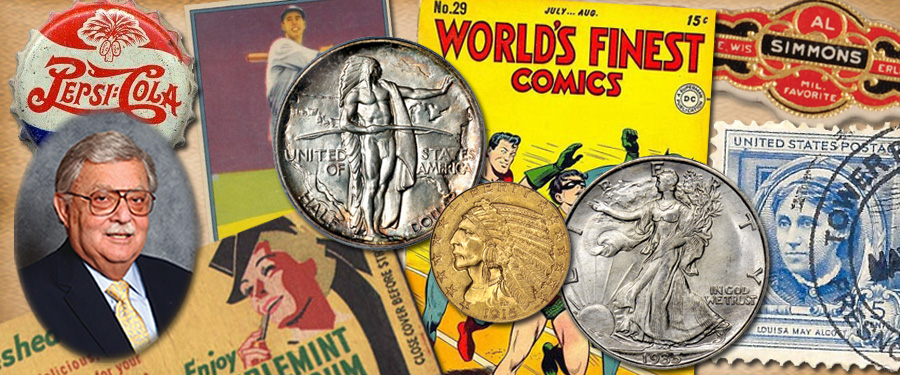
Much of my youth and my teenage years occurred in the time surrounding the Great Depression of the early 1930s. I was lucky in that my family was able to survive all right financially and it was not until later years that I realized how difficult those times were for a lot of people. Many had to “scrape the bottom of the barrel” just to make ends meet each week. For most people collecting anything was just too costly.
Sometimes already existing collections, built earlier in the century, had to be sold. Collectors who were able to hold onto their coins rarely had the resources to augment them. This was a difficult time for people in the coin business. Yet, with some good fortune and by using their skill and knowledge of numismatics, my family survived. For people like Horace Brand, Col. E.H.R. Green, F.C.C. Boyd, and others who retained some of their wealth, items could be purchased at “Depression prices” and added to their holdings.
In this portion of my story about my teenage collecting days, I will focus on half dollars, silver dollars, gold coins and commemoratives, all “high denomination” collectibles, too expensive for the average person to save. In fact, due to lack of demand the United States Mint did not need to strike half dollars from 1929 to 1933 or silver dollars from 1928 to 1934. As the economy started to recover half dollars were issued in relatively small quantities in 1933 and thereafter, and silver dollars were struck in 1934 and 1935.
Gold coins were issued until 1933, with the smaller denominations of $2.50 and $5 ending in 1929. Very few had enough cash to hold on to gold. In addition, in 1933 gold was called in to be melted, as the value of gold was raised from $20 to $35 per ounce. This was done to give more intrinsic value to our paper currency, bonds and notes and help the United States meet its financial obligations despite its slumping economy. The value of silver dropped as the value of gold increased. Economically it was hard to be a collector and very few could afford this luxury. Especially for young collectors, buying gold coins was way out of reach.
The United States Mint had been intermittently striking commemorative coins (mostly half dollars) to honor various historical and other events. During the Depression years there was a boom in this area, with influential people inside and outside the government arranging for many different commemorative issues, some of which were struck for years. These long-term half dollar types included the
Oregon Trail, Texas, Boone, and Arkansas commemoratives, while half dollars were issued in single years commemorating various events associated with Maryland, Connecticut, Hudson, San Diego, the Old Spanish Trail, Rhode Island, Cleveland, Wisconsin, Cincinnati, Long Island, York, (Maine), Bridgeport, Lynchburg, Elgin, Albany, San Francisco, Columbia, Delaware, Gettysburg, Norfolk, Rhode Island, Antietam, and New Rochelle. After World War II in 1946 a commemorative was struck for Iowa, and a series was begun honoring Booker T. Washington. Beginning in 1951, Carver-Washington half dollars were struck, a series that lasted several years and was the concluding issue of the “classic” commemorative era. Stack’s was an official distributor of some commemorative issues during this era.
While commemorative coins were very popular with collectors at the time, few of the issues actually sold out. The parties who received the commemorative coins from the Mint at face value were able to sell them at a profit, usually 50 cents to two dollars, supposedly to pay for a celebration (or something) to honor the occasion being commemorated. The price of purchasing these coins was well above what most teenagers could afford at the time, so young collectors were not often part of the popularity of these coins. Later, when some of the coins remained unsold to collectors, they were sold at face value to banks or individuals who sometimes placed them into circulation. This was another blow to collectors of the time, as it meant coins they had paid a premium for were now worth much less on the market.
Next week I will discuss how things changed as we moved into the World War II years and the middle of the 20th century.





